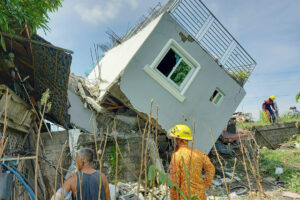
LOCALIZED languages must be used in disaster awareness mediums like guidebooks to help lessen the impacts of natural calamities, according to the Department of Science and Technology-Philippine Institute of Volcanology and Seismology (DoST-PHIVOLCS).
PHIVOLCS on Tuesday launched a guidebook to earthquakes in the Ilocano language.
“By emphasizing the Ilocano language, the project ensures that communities receive disaster information and preparedness tools that resonate with their unique cultural context and language,” PHIVOLCS said.
According to the agency, local languages are critical in effectively conveying geohazard information in “culturally relevant” ways. This would help strengthen the country’s readiness against disasters.
The guidebook was based on personal narratives and experiences shared by locals in northern and central Luzon on earthquakes and tsunamis, PHIVOLCS said.
This forms part of the agency’s Disaster Narratives for Experiential Knowledge-based Science Communication (DANAS) Project, which aims to make scientific knowledge more accessible and actionable for different communities, it added.
Under the DANAS Project, PHIVOLCS last year released earthquake, tsunami, and volcano sourcebooks with video packages in Cebuano (both Mindanao and Visayas), Hiligaynon, Tagalog, and Kapampangan.
“The project will help improve disaster resilience by utilizing community-driven narratives and everyday language to shape public communication and capacity-building efforts,” it added.
The Philippines has remained the most disaster-prone country for the 16th straight year, according to the World Risk Index. — Beatriz Marie D. Cruz
